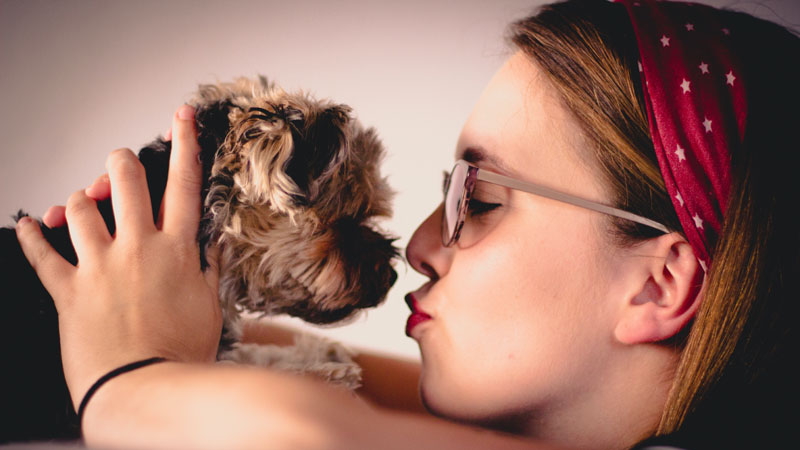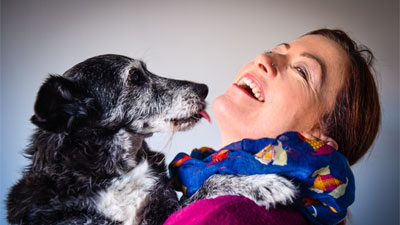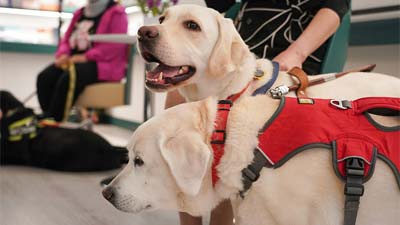- Size
- Smallest
- Small
- Small to Medium
- Medium
- Large
- Giant
- Characteristics
- Smartest
- Hypoallergenic
- Fluffy
- Best Guard
- Best Family
- Best for Kids
- Low Shedding
- Healthiest
- Police Dogs
- Most Calm
- Quietest
- Color
- White
- Black
- Grey
- Brown
- Blue
- Red
- Coat
- Hairless
- Short
- Long
- Origin
- Japan
- China
- Australia
- Germany
- Italy
- United States
- France
- Group
- Hound
- Terrier
- Herding
- Toy
- Working
- Sporting
The Art of Giving Your Dog a Kiss and The Dos and Don'ts

Photo by Julian Hochgesang on Unsplash
Dogs are beloved companions known for their unwavering loyalty and affectionate nature. As pet owners, expressing our love for these furry friends often involves physical gestures like cuddles, pats, and yes, even kisses. But have you ever wondered if there's a proper way to give a dog a kiss?
In this article, we will explore the art of giving a dog a kiss, including guidelines for respectful and safe interactions, understanding canine body language, and tips for creating a loving bond through physical affection.
Understanding a Dog's Perception of Affection
Before delving into the mechanics of giving a dog a kiss, it's crucial to understand how dogs interpret physical gestures. While humans convey affection through kissing, dogs have their unique ways of expressing and receiving love and closeness.
Scent and Body Language: Dogs primarily communicate through scent and body language. They sniff, lick, nuzzle, and lean on us to display their affection and bond with their human companions.
Kissing in Dog Language: In the canine world, licking is a way of showing affection, respect, and submission. When a dog licks, it can indicate a variety of emotions, from seeking attention and expressing love to attempting to ease stress or anxiety.
Giving Your Dog a Kiss: The Dos and Don'ts
Dos:
Read Your Dog's Cues: Before attempting to give your dog a kiss, observe their body language. A relaxed and receptive posture, wagging tail, and soft eyes indicate they might be open to affectionate gestures.
Respect Their Comfort Zone: Approach your dog calmly and gently. Avoid sudden movements or forceful interactions, especially if your dog seems uncomfortable or disinterested.
Offer Your Hand for Sniffing: Allow your dog to sniff your hand before attempting to pet or give a kiss. This helps establish trust and comfort.
Gentle and Slow Movements: When giving a kiss, approach slowly and softly. Gently bring your face close to your dog's and offer a light kiss on their forehead or cheek.
Observe Their Reaction: Pay attention to how your dog responds. If they seem relaxed and content, it's likely they appreciate the gesture. However, if they pull away, show signs of stress, or display discomfort, refrain from further attempts.
Don'ts:
Forcing Affection: Never force physical contact or kisses on your dog. Respect their boundaries and preferences.
Ignoring Their Signals: Dogs communicate through body language. Disregarding signs of discomfort or stress can lead to a negative association with affectionate gestures.
Kissing Directly on the Mouth: Avoid kissing your dog on the mouth. While this might be common among some pet owners, it can transmit germs and bacteria.
The Importance of Respecting Boundaries
Every dog has its unique personality and comfort level with physical contact. Some dogs readily enjoy cuddles and kisses, while others might prefer different forms of interaction. It's crucial to respect your dog's boundaries and preferences regarding affection.
Remember, affection should be a two-way street, where both you and your dog feel comfortable and content with the interaction.
Benefits of Affectionate Gestures for Dogs
Expressing love and affection toward your dog through gentle kisses or cuddles can have several positive effects:
Bond Strengthening: Affectionate gestures contribute to strengthening the bond between you and your dog, fostering trust and companionship.
Emotional Well-being: Physical contact and affectionate gestures can positively impact your dog's emotional well-being, reducing stress and anxiety.
Communication and Understanding: It helps in establishing a language of communication between you and your furry companion, enhancing mutual understanding.
Final Thoughts
The act of giving a dog a kiss can be a heartwarming display of love and affection. However, it's crucial to approach this act with respect for your dog's individual boundaries and preferences.
Through understanding canine body language, positive reinforcement training, and creating a safe and trusting environment, you can cultivate a bond where kisses become a cherished and enjoyable interaction.
You May Also Like
 Dog BehaviorWhat Is A Dog's Way Of Kissing? And Truly Meaning
Dog BehaviorWhat Is A Dog's Way Of Kissing? And Truly Meaning Help & AdviceTraining Your Dog to Give Kisses: A Step-by-Step Guide
Help & AdviceTraining Your Dog to Give Kisses: A Step-by-Step Guide Dog BehaviorDeciphering Dog Sleeping Positions: The Side Sleeper Pose
Dog BehaviorDeciphering Dog Sleeping Positions: The Side Sleeper Pose Dog BehaviorDeciphering Dog Sleeping Positions: The "Sphinx" Pose
Dog BehaviorDeciphering Dog Sleeping Positions: The "Sphinx" Pose Dog BehaviorWhy Does My Dog Sleep Belly Up? Reasons Behind
Dog BehaviorWhy Does My Dog Sleep Belly Up? Reasons Behind Dog BreedsBreed Guide: Choosing the Best Service Dog Breeds
Dog BreedsBreed Guide: Choosing the Best Service Dog Breeds